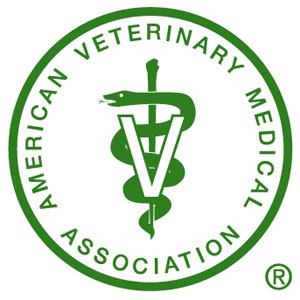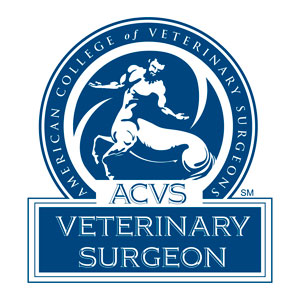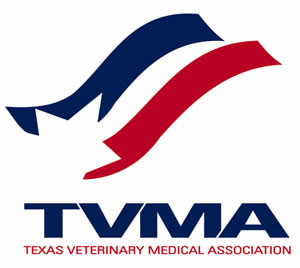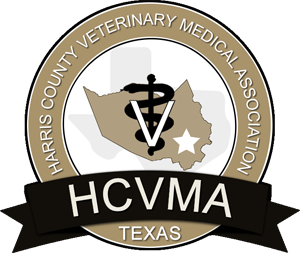The Truth about Total Hip Replacements
 Q: What are the dog breeds that are most prone to hip dysplasia?
Q: What are the dog breeds that are most prone to hip dysplasia?
A: The most common type of dogs that are prone to hip dysplasia are those that are larger or giant breeds. That said hip dysplasia can also be found in many types of mixed or crossbreeds that weigh over 30 pounds. Small dogs, and even cats, can also be affected.
Most common breeds include the Labrador Retrievers, Golden Retrievers, Australian Shepard, German Shepard, Border Collie, Rottweiler, Mastiff, Great Dane, Cavalier King Charles Spaniel, Pug, Yorkshire Terrier, and often Mixed Breed Dogs – just to name a few. Over 100 breeds are in the THR registry.
Q: How do you determine whether my dog will need a THR?
A: At GVS, we are dedicated to performing total hip replacements only on dogs when pain management is no longer effective, and/or when the patient’s quality of life is poor due to pain. We base our decision on whether or not to perform a THR by compiling the following information:
-
History: This includes questions about your dog’s pain, medications, prior injury, current vaccinations, quality of life (your dog’s ability to walk, climb stairs, play, rise and sit) and which leg is causing the most problems.
-
Physical Examination: We perform a complete assessment of your dog’s general health and skin condition as well as their orthopedic and neurological function. During examination, we will carefully examine how your dog walks, sits, and rises.
-
Radiographs: Provide your dog’s surgeon information about the hip joints. Radiographs are used to determine what size prosthesis is the best fit your companion.
-
Blood Work: Both blood and urine specimens are analyzed to ensure your dog is healthy for anesthesia and surgery.
Q: What if both hips are in need of a THR?
A: In many dogs, both hips are dysplastic or arthritic. In most cases, the most painful hip is operated on first. This typically results in the patient returning to a functional and comfortable life. However, about half of the dogs continue to suffer due to their other hip problems. In these cases the other side is a candidate for total hip replacement.
Both hips are rarely operated upon at the same time, and typically only when recent trauma has acutely injured both hips. Bilateral surgery on the same day could potentially increase the risk of complications when the dog is walking on both hips immediately after surgery. When bilateral hip surgery is performed, we usually sequence the surgeries several weeks to several months apart.
Q: Are there size and/or age limits to total hip replacement surgery?
A: Total hip replacement has successfully been used in small, medium, large, and giant breed dogs. There is a wide range of implant sizes from smallest to largest. In the past, this procedure was only considered in dogs 1 year old or older. Today, due to new generations in implants and instruments, hip replacements can be performed in dogs as young as 6 months old in certain circumstances.
We have performed total hip replacement surgeries on dogs ranging in age from 6 months to 16 years of age, with the expectation that the implants will provide the patient with a lifetime of pain-free mobility.
Q: Is this procedure permanent?
A: Yes. A total hip replacement will provide your dog with a pain-free and comfortable life. Implants do not “wear out” under normal circumstances.
Q: What about small dogs and cats?
A: We have successfully performed total hip replacement (THR) procedures on cats and small dogs, which weigh between 4 and 20 pounds. The Micro Hip THR was designed to provide a better quality of life for cats and small dogs by improving their function and providing pain-free joints.
Q: How will my dog feel after THR?
A: Most dogs walk on their new hip the day after surgery. Clients have reported that their dog’s personality has been restored and that they have gone on to lead a normal, energetic life. Total hip replacements have successfully been performed in both companion and working dogs with equally good results.
Q: How do I get started?
A: To get started, you must first schedule an appointment for a consultation and examination. Please click here for our contact information. If available, please bring all radiographs and recent blood work to your appointment.
If your dog or cat is a good candidate for total hip replacement surgery, the surgery will be scheduled. Your pet’s hair (on the leg being operated) is sometimes clipped 2 to 3 weeks prior to surgery depending on hair length, thickness of the hair coat, skin condition, and the time of year. We ask that you please bathe your pet beginning 3 days before surgery. An antiseptic shampoo will be recommended by the surgeon.












